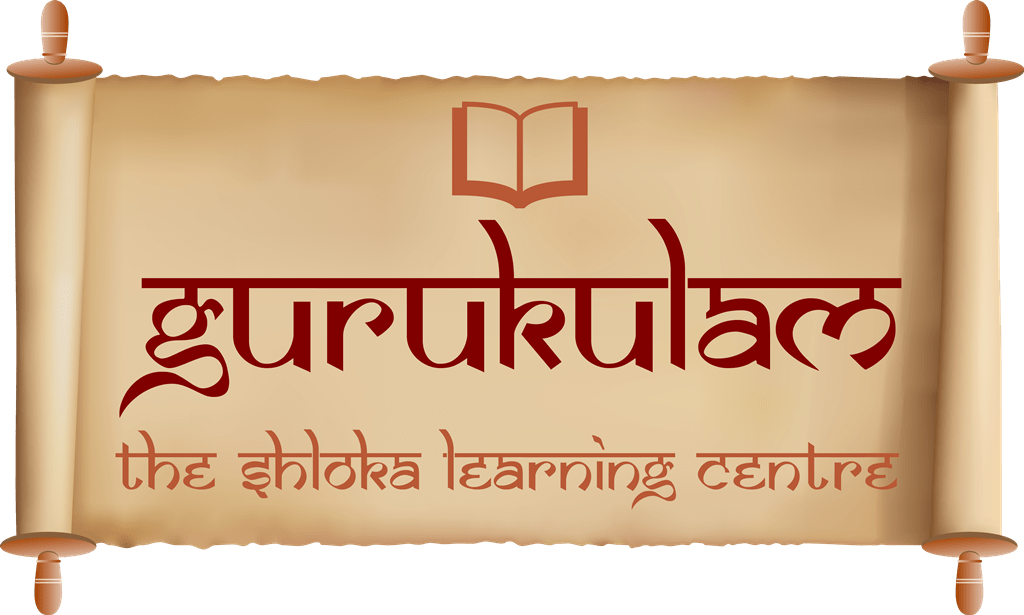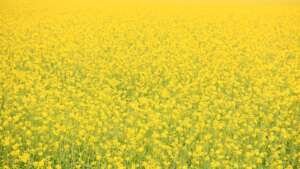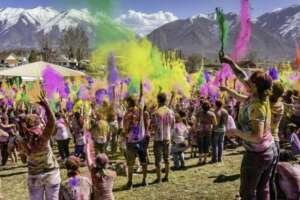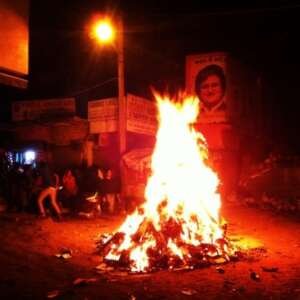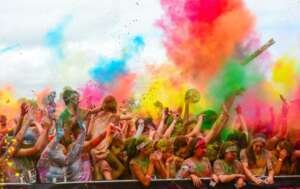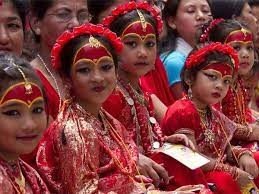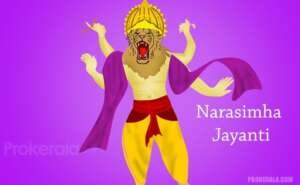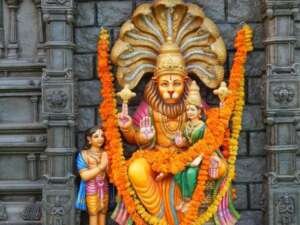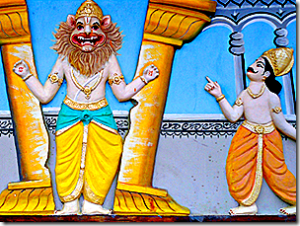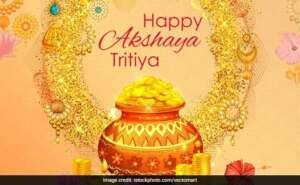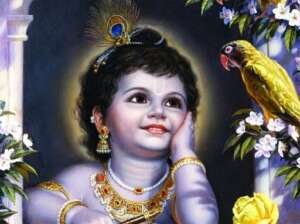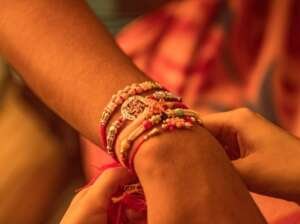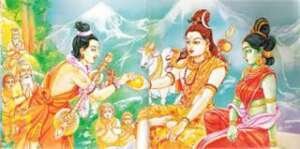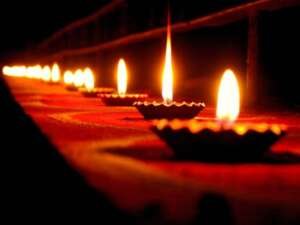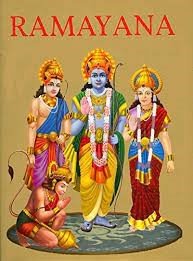Festival Series
By Ahana
January- Celebrating Pongal
What is Pongal?
Pongal is a four-day festival and is celebrated on January 14th. It is known as the “Harvest Festival” in South India, particularly in Tamil Nadu.
Why is Pongal celebrated?
India is a very agricultural-based society, and since this is a harvest festival, it is highly valued by farmers and working-class people. The money brought from the harvest is used to celebrate weddings and solving family problems. Many people believe that it will bring prosperity, so they ring in this holiday with great joy and pomp.
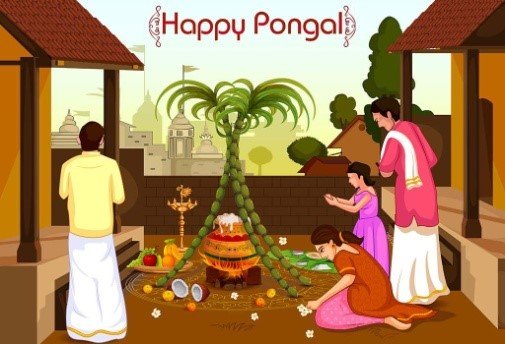
How is Pongal celebrated?
The first day of the festival is celebrated by worshipping Lord Indra (who gives rains), and they pay homage to him to give thanks for the prosperous harvest. The ritual known as “Bhogi Mantalu” is recognized today, where many household items that are of no use are thrown into a fire. The second day is called “Perum Pongal” (this varies throughout parts of India). On this day, people perform puja and boil rice in milk outside. This is a symbolic offering to the Sun God, and all of the people wear traditional garments. A turmeric plant is tied around the pot where the rice is being boiled, and many offer sugarcane, coconut, and bananas in the dish. A “Kolam” is also created during this time. It is a design traced with white lime powder and is also made of rice flour. The third day of the festival is known as “Mattu Pongal.” On this day, people worship their cattle by tying bells, beads, flower garlands, and sheaves of corn around the cattle’s neck. The cattle are given Pongal to eat, and aarti is performed on the cattle to ward off the evil eye. The fourth and final day of Pongal is called “Kannum Pongal.” During the festival, a turmeric leaf is placed on the ground, where leftovers of sweet Pongal, rice, betel leaves and nuts, two pieces of sugarcane, and plantains are kept. Then, the aarti is performed, and water is sprinkled on the Kolam.
How is Pongal celebrated throughout India?
In Tamil Nadu, people create rangolis, make Pongal, and offer prayers to God. Pongal also marks the last day of the Tamil month known as Marghazi. In Mumbai, people decorate their homes and temples and cook special dishes for the celebration. In Andhra, the four days of celebration are known as Bhogi Festival, Surya Pongal, Mattu Pongal, and Kannum Pongal. Cows that are decorated in ornaments and garlands are taken out for processions, and entrances to each home are decorated with colorful Kolam designs. The festival is referred to as Makara Sankranthi here. The traditional dance, ‘Kolattam,” is also performed.
 In Karnataka, Pongal and lemon rice, vada, payasam, and vegetable gravies are prepared. In villages, women cook Pongal in the fields, while everyone sits together to eat it. In Orissa (now known as Odisha), Radha and Krishna’s love is celebrated via dandiya programs, and the festival is three days long. This festival marks the end of Gobbi, a month-long festival that the women celebrate.
In Karnataka, Pongal and lemon rice, vada, payasam, and vegetable gravies are prepared. In villages, women cook Pongal in the fields, while everyone sits together to eat it. In Orissa (now known as Odisha), Radha and Krishna’s love is celebrated via dandiya programs, and the festival is three days long. This festival marks the end of Gobbi, a month-long festival that the women celebrate.
 In Assam, the festival is known as the Magh Bihu and is four days long. The traditional folk song for this festival is known as “Bihugeet”. The festival is centered on eating and since this festival denotes the end of the harvesting season for many residents of Assam, many people feast and enjoy on this day.
In Assam, the festival is known as the Magh Bihu and is four days long. The traditional folk song for this festival is known as “Bihugeet”. The festival is centered on eating and since this festival denotes the end of the harvesting season for many residents of Assam, many people feast and enjoy on this day.
Courtesy: Google Images
In Punjab, this festival is known as Lohri. It is associated with both celebrating the decline of winter and celebrating the harvest of the Rabi crops. This is a one day-long festival and is celebrated on the 13th or 14th of each January. Fires are lit at night and people sing and dance, wishing each other health, happiness, and prosperity. Lohri is dedicated to the Sun and Fire God, and people offer peanuts, and sweets to the fire god.
Overall, Pongal is celebrated differently everywhere, but its purpose of showing gratitude to the gods will always be aligned, no matter where one is in India!
Fun Fact: Did you know that in 2017, a Democratic senator in the United States of America signed a bill announcing that January 14th should be known as Pongal Day?
For Gurukulam- The Shloka Learning Centre
Ahana, 12 years
Festival Series
Month 2: February 2021
Vasant Panchami
By: Ahana Raghavan
For: Gurukulam- The Shloka Learning Centre
What is Vasant Panchami, and what does it celebrate?
The beginning of spring is very festive and bright, and Hindus celebrate it with great pomp, welcoming in the blooming flowers, the blossoming trees, and the beautiful weather. Hindus celebrate Vasant Panchami, to welcome the arrival of the new season. Vasant Panchami also takes place forty days before Holi, so it is truly the onset of Spring. It is also on the fifth day of the month Magha (in the traditional Indian calendar).
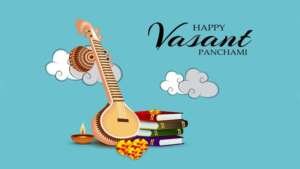 What is the significance of Vasant Panchami?
What is the significance of Vasant Panchami?
During the springtime, mustard flowers that are yellow in color begin to bloom in India. These flowers are associated with the arrival of Spring. Due to the mustard flowers representing the beginning of this season, the color yellow is associated with the festival, and therefore, in many regions of India, the women of the household wear the color yellow. The yellow turmeric tilak is also applied on the forehead, to celebrate and pray. The goddess Saraswathi (the goddess of wisdom, knowledge, language, music, and all the arts), is celebrated throughout the festival, which will be taking place on February 16th this year. Puja is suggested to be done in the afternoon, though the whole day is an auspicious time to celebrate and worship Saraswathi. This day is considered to be auspicious for students, for starting a business or important work, and auspicious for housewarming celebrations
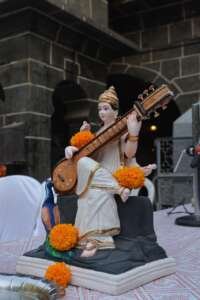 How is the festival celebrated throughout India?
How is the festival celebrated throughout India?
The festival is mostly celebrated in northern parts of India such as Punjab and Bihar. In these states, the festival is one of the kites and they fly kites throughout these regions. In Rajasthan, people wear jasmine garlands on this day. It is a public holiday in the Haryana, Odisha, Tripura, and West Bengal regions of India, and is considered to be a festival of kites in these regions.
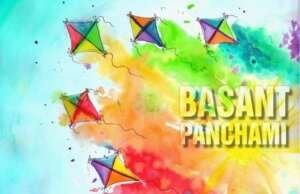 People typically eat foods with yellow in them, such as khichdi, and they celebrate the mustard flower beds which are in full bloom. Kesaria Bhaat is also made, and it is sweet yellow rice.
People typically eat foods with yellow in them, such as khichdi, and they celebrate the mustard flower beds which are in full bloom. Kesaria Bhaat is also made, and it is sweet yellow rice.
Festival Series
Month 3: March 2021
Holi
By: Ahana Raghavan, 12 years
For: Gurukulam- The Shloka Learning Centre
What is Holi and how is it celebrated?
You have probably already heard of Holi because it is one of the most popular festivals that India celebrates! It marks the beginning of spring, following a rather long winter. This also symbolizes the triumph of good over evil. Kids especially love this celebration because it is known as the Festival of Colors, and a key way this is celebrated is by throwing colorful powders at one another.
Courtesy: Google Images
There are numerous foods eaten for Holi. For example, poli, rasmalai, and thandai are eaten during this time. However, behind the pompous and fun celebrations, there is a deeper, more religious significance for numerous Indians.
What does the festival celebrate?
Simply put, the festival celebrates the triumph of good over evil, and honors Lord Vishnu, and his devotee Prahlada. The mythological significance of Holi lies in the fight between Prahlada and Hiranyakshyapu. Hiranyakshyapu wanted his sister, Holika to sit in the fire with Prahlada sitting in her lap. Holika had a boon to enter the fire unscathed, but Prahlada’s devotion to the lord saved him, and Holika was burned by Lord Vishnu, despite the immunity she had been granted. A bonfire is lit to push bad spirits away, known as Holika Dahan.
What is the modern cultural significance of Holi?
To this day, Holi is celebrated with great pomp and festivity. In fact, Holi celebrations have spread much farther than India. London hosts the “Color Run” for Holi every year. Despite the festivities and enjoyment, there are some controversies with regards to the celebrations. Many say that there are many gimmicky events that diminish the impact it has on so many Indians around the world. They remind those celebrating that Holi is a religious festival and that its religious impact must be recognized. Many even say that some of these events are potential “money-making events”.
Despite all of the comments made on the way we celebrate Holi today, we must all remember where this celebration branched from, and the religious significance of the celebration.
Festival Series
Month 5: May 2021
Narasimha Jayanti
By: Ahana Raghavan, 12 years
For: Gurukulam- The Shloka Learning Centre
What is Narasimha Jayanti and how is it celebrated?
Narasimha Jayanti celebrates the birthday of Lord Narasimha, the fourth avatar of Vishnu who is in the form of half-lion and half-man. He appeared like this to kill the demon Hiranyakashipu. Narasimha Jayanti always falls under the month Vaisakha in the Hindu calendar (typically April or May).
The festival is commonly celebrated to honor the power of good over evil. Narasimha Jayanti is typically celebrated through special puja, with the picture of Lord Narasimha or Goddess Lakshmi. Fresh or new clothes are to be worn once a devotee wakes up early during the Brahma muhurta (an auspicious 48 minutes that begins 1 hour and 36 minutes before sunrise).
Gram dal and jaggery should be offered to the deity and the puja ceremony is to be done with friends and relatives, typically offering sweets, kumkum, kesar, flowers, and coconut. Many fast on this day to please the Gods and the Narasimha mantra is to be recited in order to attain a more meaningful life. It is very good to donate clothes, precious metals, and sesame seeds to the poor on this day.
What is the story of Narasimha Jayanti?
Lord Vishnu killed the brother of Hiranyakashipu to protect mankind and the earth, and Hiranyakashipu was frustrated at this. He prayed for a long period of time and Lord Brahma gave him a blessing. Hiranyakashipu had a son named Prahlad, and he was a pious devotee of Lord Narayana. His father did not like this and tried to tell Prahlad to stop worshipping Lord Narayana and convert to a demon to take revenge. However, Prahlad was given a blessing from Lord Vishnu. Hiranyakashipu’s sister, Holika, tried to convert Prahlad to a demon by sitting in a fire. She had a blessing that she would never be burned by fire, so she sat with Prahlad on her lap. However, Prahlad’s devotion to the Lord saved him, and Holika was burned to death, despite the immunity given to her. Hiranyakashipu was very angry at this and attacked a pillar near him. Lord Narasimha came out of it. Hiranyakashipu had a blessing that no human, animal, or Deva could kill him and he could not be killed during the day or night, in space or on Earth, and could not be killed with weapons. Lord Narasimha came in the form of half-lion and half-man and killed him by ripping his nails on his chest.
Overall, Narasimha Jayanti might have many parts to the celebration, but it is centered on honoring Lord Narasimha, an avatar of Lord Vishnu. Thank you so much for reading! Namaste.
Festival Series
Month 5: May 2021
Akshaya Tritiya- Bonus!
By: Ahana Raghavan, 12 years
For: Gurukulam- The Shloka Learning Centre
What is Akshaya Tritiya, and how is it celebrated?
Akshaya Tritiya celebrates Lord Vishnu. For many years, it has fallen on Lord Parashurama’s birthday (Lord Parashurama is the sixth avatar of Lord Vishnu). It is celebrated through puja and yajna, and charitable works are an important part of the day, people often give grains and clothing to the poor on this day. Oftentimes, rice, vegetables, fruit, and clothes will be given for charity and during puja, tulsi water is sprinkled all around. Also, many devotees fast on this day to appease the Lord.
What are some fun facts about Akshaya Tritiya?
- Akshaya Tritiya is also the day Goddess Annapurna was born (the goddess of food and nourishment).
- Lord Ganesha and Veda Vyasa started writing the Mahabharata on this day.
- On this day, Lord Krishna provided wealth and monetary gains to his poor friend Sudama who asked for his help.
- Akshaya Tritiya is considered a very auspicious time for weddings and pilgrimages.
- Many people also purchase gold, believing that more wealth and prosperity will come in the future.
- On this day, the “Akshaya Patra” was given to the Pandavas. The “Akshaya Patra” was a vessel that never ran out of food and helped them when they were in exile. The Akshaya Patra Foundation was created to honor this and is a non-profit that feeds people in need. It was established in 2000 with the goal of educating children and countering classroom hunger.
Festival Series
Month 6: June 2021
Ganga Dussehra
By: Ahana Raghavan
For: Gurukulam- The Shloka Learning Centre
Courtesy: Google Images
What is Ganga Dussehra and how is it celebrated?
Ganga Dussehra is dedicated to Goddess Ganga, who came to Earth on this day. Ganga Dussehra is on June 20, 2021. Goddess Ganga is the goddess of purification and forgiveness. It is said that Ganga is the personification of the Ganga River.
Many people take a dip in the river to cleanse themselves and rid themselves of sins. It brings them to a state of forgiveness and cures ailments. Those who recite the Ganga Stotra while in the water are said to be purified of all sins they have committed. Taking ten dips in the water is also said to get rid of one’s sins. It is celebrated for 10 days in the month of May or June and devotees take a dip in the holy water. They also place earthen lamps on the water during aarti in the evening, and melodies are sung by devotees.
People pray to the river to attain moksha. Moksha is a point in time when one is released from the cycle of rebirth. Reincarnation is the idea that when people die, they are born in a different body. When you no longer reincarnate, you have attained moksha.
What is the story of Ganga?
King Bhagiratha brought Goddess Ganga to Earth because only she could bestow moksha upon his ancestors, who were cursed by Sage Kapila. She was sent to purify the ashes of King Bhagiratha’s ancestors. King Bhagiratha had 60,000 ancestors, all were sons of King Sagaram and they were cursed by Sage Kapila. They were cursed when they disturbed the sage. Here is why they disturbed Sage Kapila. King Sagara was completing 100 Ashwamedhas (a horse sacrifice ritual), which had only been done by Lord Indra before. Lord Indra was afraid that he might be replaced in his role. So, he took the celestial horse that was to be used for the 100th yajna, and hid it where Sage Kapila was meditating. The sons of King Sagara, known as the Sagaras, saw the horse and attacked with their weapons. Sage Kapila burnt them all. After years of penance, she descended towards Earth. Lord Shiva agreed to channel her flow. The river is known as Jatashankari because it flowed from Shiva’s jata or hair.
Festival Series
Month 7: July 2021
Guru Purnima
By: Ahana Raghavan, 13 years
For: Gurukulam- The Shloka Learning Centre
What is Guru Purnima, and how is it celebrated?
Guru Purnima is a festival that is dedicated to the goodness of teachers and spiritual gurus. Mahatma Gandhi revived the festival in honor of his spiritual guru, Shrimad Rajchandra. He was a poet, philosopher, and scholar. Gandhi recalled that his spiritual guru kept him going, and gave him “refuge in times of spiritual crisis”. It is celebrated in many ways. The main way the festival is celebrated is through rituals used to honor teachers. Many households also follow a strict vegetarian diet on this day as well. Temples distribute prasadam, mainly including fresh fruits and sweetened curd. Families enjoy delicacies like Soan Papdi, Khichdi, Gulab Jamun, and Halwa.
In some Indian schools, students give their teachers gifts as a sign of respect, and some even touch their feet to show their devotion to their teachers. It is a very important day.
When is Guru Purnima celebrated?
Guru Purnima is celebrated on July 24, 2021. It occurs on a full-moon day (Purnima), and in the Hindu month of Ashadha.
What is the story behind Guru Purnima?
Guru Purnima celebrates the birth of the first guru (Adi Guru). Many say that 15,000 years ago, a sage appeared in the Himalayas. He showed no signs of life, as he was deep thought, and therefore his eyes were closed. Seven people circled around him, and after a long while, he opened his eyes. The men asked him what he was doing and how he was doing it. The sage educated them on the basics of meditation and closed his eyes once more. For 84 years, the men too closed their eyes and enlightened themselves. Finally, on the day of Dakshinayana (the six-month period between the Summer and Winter Solstice), the sage woke up to see the seven men sitting there. He was pleased and decided to share his wisdom with them. These men were known as the Saptrishis (seven sages) and traveled across the world to share the wisdom they collected from Adi Guru.
What are some fun facts about Guru Purnima?
- Many people donate food and clothes on this day. Some people do Mahabhandaras (grand feasts) to feed people as a charitable deed.
- The rituals one should do during Guru Purnima Pooja include…
- He/she should wake up at the Brahmamuhurta (I have spoken about this before, but it is the time period that falls exactly 1 hour and 36 minutes before sunrise). They should also take bath and sit in the prayer room.
- He/she should give an offering to VedVyasa and his guru.
- One should visit all of their gurus and pay respects.
- One should fast to seek their teacher’s blessings.
- One should meditate.
Overall, Guru Purnima might have many parts to the celebration, but it is centred on honouring your teachers and gurus. Thank you so much for reading! Hope you read the next Festival Series article! Namaste.
Festival Series
Month 8: August 2021
Varamahalakshmi
By: Ahana Raghavan, 13 years
For: Gurukulam- The Shloka Learning Centre
What is Varamahalakshmi and how is it celebrated?
Varamahalakshmi celebrates Goddess Lakshmi. It is celebrated through puja done by married women. Women often fast on this day if they want to perform the Varamahalakshmi Vrata. Many offer sweets, fruit, and water to Goddess Lakshmi on this day when performing the ceremony.
Courtesy: Google Images
When does Varamahalakshmi take place?
Varamahalakshmi takes place on August 20, 2021.
What is the story of Varamahalakshmi?
The story of Varamahalakshmi actually begins with Lord Shiva telling Goddess Parvati about the Varamahalakshmi Vrata. Goddess Parvati asked him about a vrata that would be helpful to women. Lord Shiva narrated the tale of a woman named Charumati.
Charumati was extremely pious and impressed with her devotion, Goddess Lakshmi appeared in her dream. She told Charumati to perform the Varamahalakshmi Vrata. Goddess Lakshmi explained the procedure of the Varamahalakshmi Vrata, and as she was devotional, Charumati invited her friends, neighbors, and family to perform the ceremony. All of those who performed the puja were blessed with wealth and prosperity.
Courtesy: Google Images
Thank you so much for reading! Namaste. Hope you read the next Festival Series article and the ones to come.
Festival Series
Month 8: August 2021
Krishna Janmashtami
By: Ahana Raghavan, 13 years
For: Gurukulam- The Shloka Learning Centre
What is Krishna Janmashtami and how is it celebrated?
Krishna Janmashtami is a festival that celebrates the birth of Krishna. It is celebrated through fasting, singing, decorating, praying, and bathing the idol of Krishna. Some people even fly kites to celebrate the festival! Most people eat traditional sweets and share the sweets. Devotees sing devotional tunes to honor Lord Krishna and some devotees even stay quiet throughout the night because they are praying.
When is Krishna Janmashtami?
Krishna Janmashtami takes place on August 30th. This year, the 5,248th birth anniversary of Lord Krishna will be occurring.
What is the story of Krishna’s birth?
Devaki’s brother, Kamsa (also spelled as Kansa), was so excited that his sister and now brother-in-law, were married. He agreed to drive them in his chariot, to celebrate their wedding.
However, all of a sudden, a celestial voice spoke. It said that Kamsa would be killed by Devaki’s eighth child. Angered by this, he chained the both of them in his prison, and he killed the first, second, third, fourth, fifth, and sixth son of Devaki. Finally, the day came. She was giving birth to her eighth child. The baby was soon born, but something was different about this child. Suddenly, Devaki and Vasudeva were free from the chains that once held them both. Realizing what needed to be done, Vasudeva snuck out of the prison and into a village, where he exchanged his newborn with a little girl.
He snuck back in and they tied their chains back together. Kamsa came in, and as he tried to kill the baby, the goddess Yogmaya emerged, warning that death had arrived in his kingdom. She vanished. Krishna grew up with Nanda and Yashoda, since he was exchanged for another child. He grew up to be extremely powerful and witty and ended up defeating Kamsa in a battle.
Overall, Krishna Janmashtami might have many parts to the celebration, but it is centred on celebrating the birth of Krishna (the eighth avatar of Vishnu). Thank you so much for reading! Hope you read the next Festival Series article! Namaste.
Festival Series
Month 8: August 2021
Raksha Bandhan
By: Ahana Raghavan, 13 years
For: Gurukulam- The Shloka Learning Centre
What is Raksha Bandhan and how is it celebrated?
Raksha Bandhan celebrates the bond between a brother and sister. On this day, sisters tie rakhi on the wrists of their brothers. This protects them against evil, and they pray for long life and happiness for the siblings. The word Raksha means protection, and this applied during the time of medieval India when women often felt like they were not safe. This rakhi strengthened the bond between a brother and sister, making them feel protected by their brothers.
Courtesy: Google Images
When is Raksha Bandhan?
Raksha Bandhan takes place on August 22nd this year.
Thank you so much for reading! Hope you read the next Festival Series article! Namaste.
Festival Series
Month 9: September 2021
Ganesha Chaturthi
By: Ahana Raghavan, 13 years
For: Gurukulam- The Shloka Learning Centre
Courtesy: Google Images
What is Ganesha Chaturthi and how is it celebrated?
Ganesha Chaturthi, also known as Vinayaka Chaturthi, celebrates the birth of Lord Ganesha. Worshippers sing devotional songs and install the statue in their homes or in temples. Many immerse statues of Ganesha in rivers during the final stages of the festival. Common sweets that are eaten on this day include modaks, burfis, and ladoos.
When does Ganesha Chaturthi take place?
It lasts for ten days and starts on September 10, 2021.
What are some fun stories about Lord Ganesha?
Courtesy: Google Images
Why does Ganesha have an elephant head?
One day, Goddess Parvati (Ganesha’s mother) carved a young boy out of turmeric and gave it life. Lord Shiva did not know about this, and when the boy (young Lord Ganesha) denied Lord Shiva entry into his abode, Ganesha was decapitated. Lord Brahma went out in search of a replacement head, and the first creature he saw was an elephant, therefore Lord Ganesha has an elephant head.
The Race Around the World
Courtesy: Google Images
One day, Lord Narada came to Lord Shiva with a mango that when eaten, would bring knowledge and wisdom to one who consumes it. Lord Shiva was now in a predicament. Which one of his two sons should he give it to? So, he set up a competition with Goddess Parvati. The first one of his two sons to race around the world three times would win the mango. Lord Ganesha was in a dilemma. He was a rather plump boy and did not have a fast mount like Lord Kartikeya, as he had a peacock as his mount. Lord Ganesha’s brother was also known for being active.
However, when the time came for the competition, Lord Kartikeya began going around the world, but Lord Ganesha simply circled around his parents three times. Then, he said that it was time for his mango. Lord Shiva and Goddess Parvati told him that he did not meet the terms of their agreement. Then, Lord Ganesha retorted that his parents were his world and to him, he did cross the world three times. They were astonished by his wit and gave him the mango.
There are two ways the story could have ended, worshippers believe. The first way is that Lord Kartikeya simply accepted the fact that his brother had more wit than him, and the second way is that he became short-tempered and went to Palani Hills to meditate, then Ganesha soothed him and they flew back to Mount Kailash, their abode. Many believers follow the latter, and this is why they constructed a temple for Lord Kartikeya in Palani Hills in South India.
Courtesy: Google Images
Thank you so much for reading! Namaste. Hope you read the next Festival Series article and the ones to come.
Festival Series
Month 10: October 2021
Vijayadashami
By: Ahana Raghavan, 13 years
For: Gurukulam- The Shloka Learning Centre
Courtesy: Google Images
What is Vijayadashami and how is it celebrated?
Vijayadashami, also known as Dusshera, is a holiday that marks the triumph of good over evil, and particularly the defeat of Ravana (a Rakshasa demon with ten heads) and the victory of Rama. It is often celebrated through prayer and the burning effigies of Ravana.
When is Vijayadashami taking place?
Vijayadashami takes place on October 15, 2021.
What is the story of Vijayadashami?
The epic, “Ramayana” was entirely based on the story of Rama, Ravana, and Vijayadashami. Essentially, Rama and Sita were married and Rama was the son of the king of Ayodhya. However, a demon named Ravana (known for his ten heads) kidnapped her and she needed to be saved.
Courtesy: Google Images
Rama had to save Sita from Ravana’s clutches. He did so with an army of monkeys. The king of the monkeys was named Sugriva, and the commander-in-chief was named Nila. Sugriva ordered Nila to assemble the monkeys so that they could find Sita. One of the monkeys was called Hanuman.
Courtesy: Google Images
He was extremely loyal to Rama and agreed to help him. After fighting against Ravana, Rama eventually was able to save Sita, and they lived peacefully. Vijayadashami is a day celebrating this. There are many versions of the “Ramayana”, as it is a famous epic, alongside the “Mahabharata”.
Courtesy: Google Images
Thank you so much for reading! Namaste. Hope you read the next Festival Series article and the ones to come.
Festival Series
Month 11: November 2021
Diwali
By: Ahana Raghavan, 13 years
For: Gurukulam- The Shloka Learning Centre
What is Diwali and how is it celebrated?
Diwali, also known as Deepavali, is commonly known as the “Festival of Lights”. However, it has a much greater significance in Hinduism. It actually represents Rama’s defeat of Ravana, as well as his triumphant return to Ayodhya with his brother Lakshmana and his wife Sita, after fourteen years of exile.* The lights (also known as diyas) lit up in numerous Indian households represent the triumph of good over evil. Diyas are the first way it is celebrated, but there is also home decoration, puja, and even shopping! But, the one that is a unanimous favourite, among the young and old, is lighting fireworks! This is what comes to mind when people think of Diwali.
* I have spoken about the story of Rama defeating Ravana in my article with Hanuman’s help, Panchamukhi Hanuman. But just in case, here it is. Check my “Panchamukhi Hanuman” article out as well!
Ahiravan was the ruler of Patal Lok, also known as the underworld, and was the brother of the demon Ravana. Ahiravan was known for his illusions. When Ravana’s son was killed by Lakshmana, Ravana was sad and summoned his brother, who decided not to fight. However, as a devotee of Goddess Mahamaya and one who sacrificed humans to her, he agreed to kidnap Rama and Lakshmana to sacrifice them to Goddess Mahamaya. Hanuman, as one who was extremely loyal to the brothers, created a shield around their cottage.
When Ahiravan disguises himself, Hanuman does not fall for the trick until he disguises himself as Vibhishan, who told them about Ahiravan’s plans. Hanuman was fooled. Ahiravan then kidnapped them. Hanuman then tries to rescue them, with advice from Vibhishan. Fun fact: It is said that in Patal Lok, everything is backward. Gravity pulls things away instead of together, fire cools things down instead of burning them, and the progress of time was backward.
Hanuman travels to Patal Lok, and after fighting his own son (who is so dedicated to Ahiravan and receives a blessing from Hanuman for his devotion and commitment), he finds out that the only way of killing Ahiravan is by putting out five different lamps at the same times that face in different directions. Using the form of Panchamukhi Hanuman, he is able to do so, and kills Ahiravan and rescues Rama and Lakshmana.
Thank you so much for reading! Namaste. Hope you read the next Festival Series article and the ones to come.
Festival Series
Month 12: December 2021
Margazhi
By: Ahana Raghavan, 13 years
For: Gurukulam- The Shloka Learning Centre
What is Margazhi?
Margazhi is a month of the Hindu calendar. Margazhi is an auspicious month for when one wants to grow spiritually. It is considered the best Tamizh month. Marriages and other auspicious events are typically not held at this time, it is merely a time for religious celebrations.
The cultural significance of Margazhi:
What is Krishna’s association with Margazhi?
In the Bhagavad Gita, Krishna says that he manifests himself as Margazhi. This is why it is considered to be such an auspicious month.
What is Thiruppavai and why is it read?
People recite the Thiruppavai (which was a religious scripture written by Andal- the human incarnation of Goddess Bhudevi) because it is a remembrance of Andal’s deeds and it reminds Krishna of Andal.
When is Gita Jayanti and what does it celebrate?
Gita Jayanti takes place on December 14, 2021 (this is a Tuesday). It marks the anniversary of the Bhagavad Gita. This year, it marks the 5158th anniversary of the Bhagavad Gita. It is celebrated by reading the Gita and discussing it (often done with priests and scholars).
How does the whole of India celebrate this event?
Like I stated before, this is a month of religious rituals, and it is often celebrated by performing pooja. Many say that if you wake up early and perform pooja every morning in this month, it is like performing pooja every day of the entire year. People often sing bhajans (devotional songs) to attain the blessings of the gods. There is no one particular way to celebrate, as this is a month and not a particular festival after all. However, there are Margazhi festivals held every year. There are festivals with music performances, fine arts displays, discourses, debates, expositions, lectures, and more! It is a great way to celebrate, and people from all over India come to the festival!
When is Margazhi?
This year, it starts on December 16, 2021, and ends on January 14, 2022.
Courtesy: Google Images
Thank you so much for reading! This is our last festival series article this year, and it has been great to be a part of this journey with all who have ridden along. I hope it was an enjoyable year-long read! Namaste, and once again, thanks to all who have shown their support. 🙂
Sincerely,
Ahana Raghavan – Gurukulam- The Shloka Learning Centre
